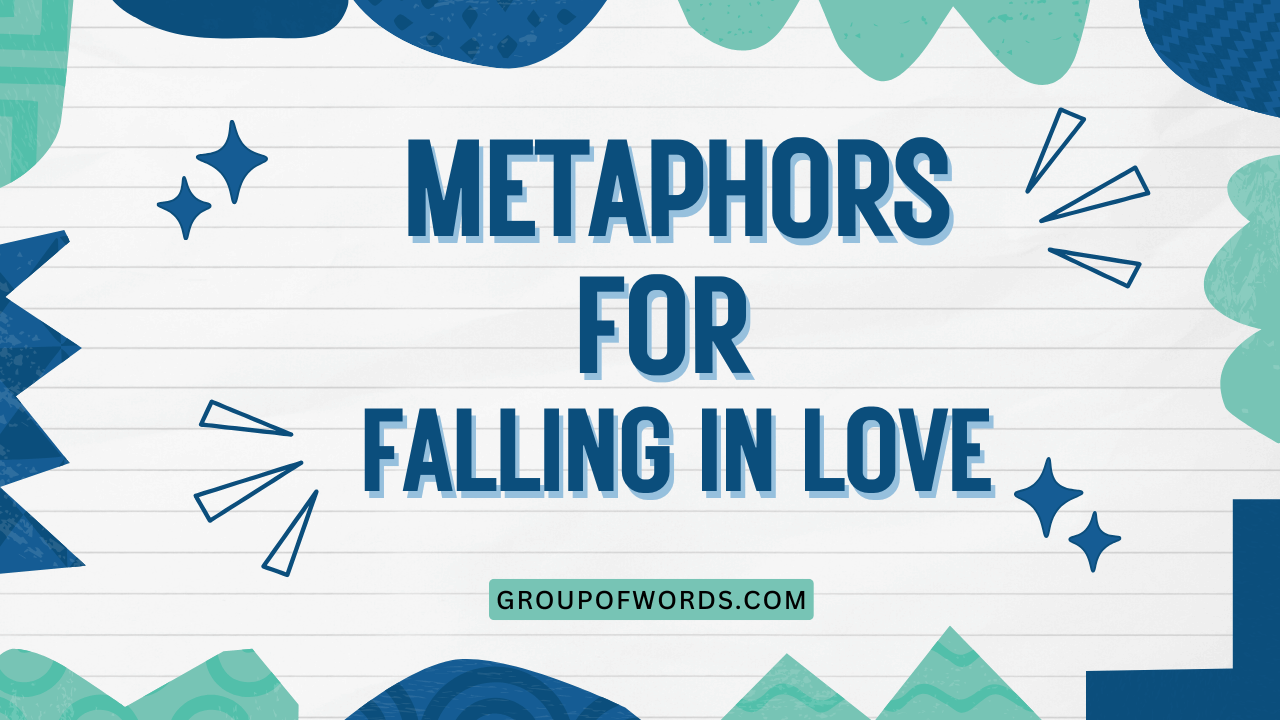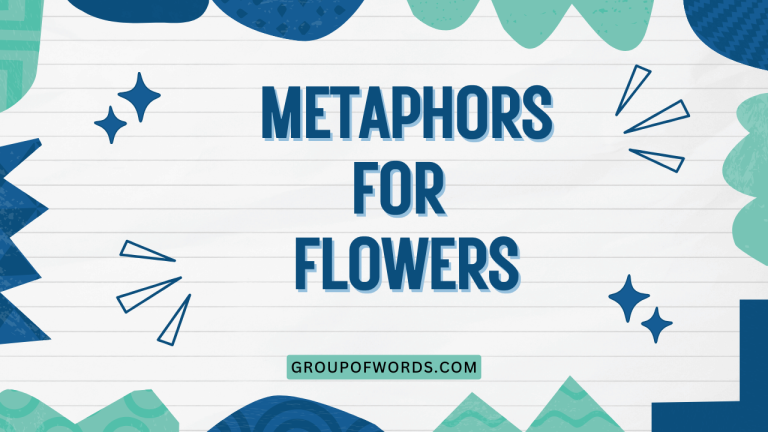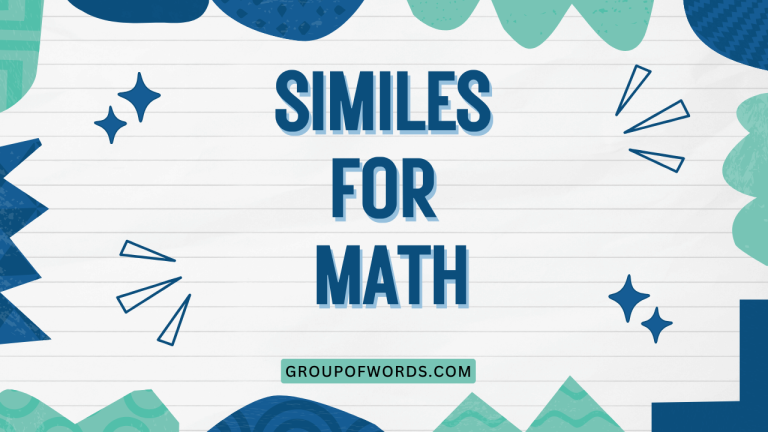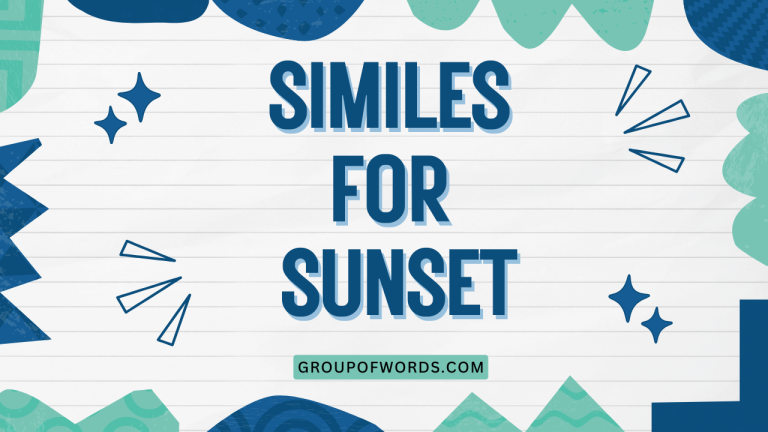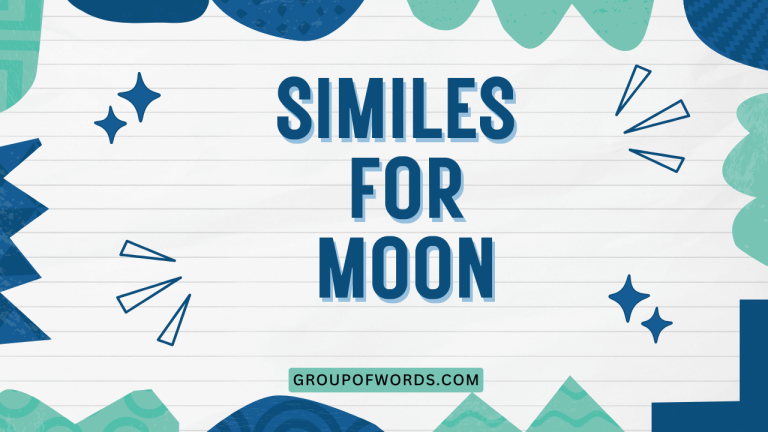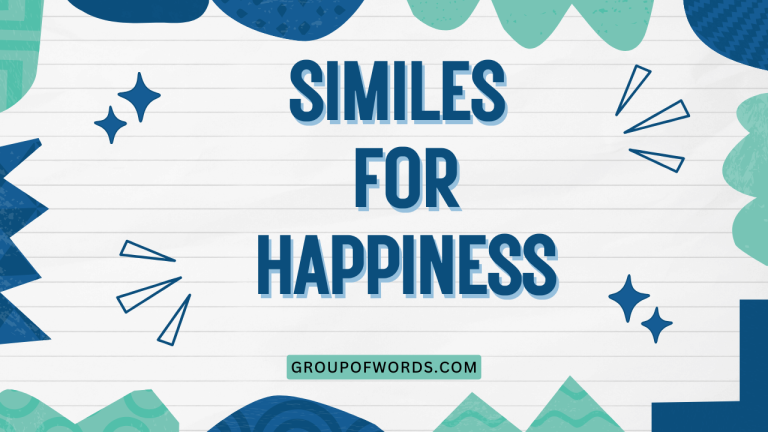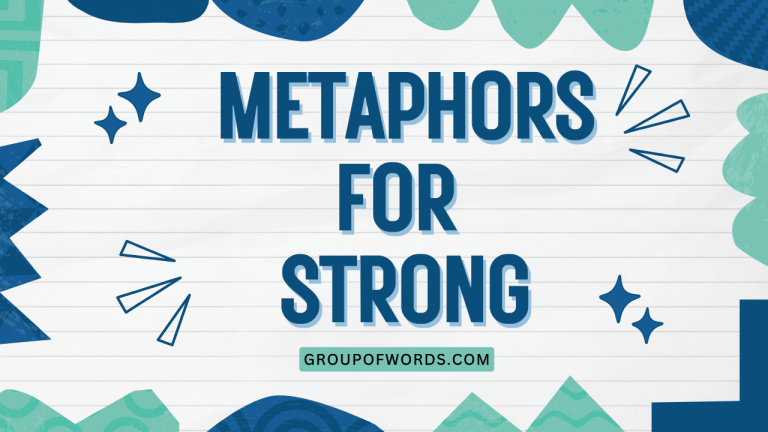Metaphors for Falling in Love: Grammar and Usage
Understanding metaphors is crucial for mastering English, especially when exploring abstract concepts like love. Metaphors allow us to describe complex emotions and experiences in relatable terms.
This article provides a comprehensive guide to metaphors used when discussing falling in love, exploring their grammatical structure, different categories, and practical usage. This guide will benefit English language learners, writers, and anyone interested in understanding how language shapes our perception of love and relationships.
By the end of this article, you will have a solid grasp of how metaphors function in describing the experience of falling in love, and how to use them effectively in your own writing and conversations.
Table of Contents
- Introduction
- Definition of Metaphor
- Structural Breakdown of Metaphors
- Types of Metaphors for Falling in Love
- Examples of Metaphors for Falling in Love
- Usage Rules for Metaphors
- Common Mistakes with Metaphors
- Practice Exercises
- Advanced Topics in Metaphorical Language
- FAQ
- Conclusion
Definition of Metaphor
A metaphor is a figure of speech that directly compares two unrelated things, suggesting a similarity between them. It is a powerful tool used to convey complex ideas or emotions vividly and concisely. Unlike similes, which use words like “like” or “as” to make a comparison, metaphors state that one thing is another, creating a more direct and impactful connection. The essence of a metaphor lies in transferring qualities from one context to another to enhance understanding and create imaginative associations.
In the context of falling in love, metaphors are frequently used to express the intense emotions, transformative experiences, and often irrational behavior associated with this phenomenon. They help us articulate feelings that are difficult to express literally, by relating them to more tangible and relatable concepts.
For example, instead of simply stating that love is powerful, we might say “Love is a raging fire,” using the metaphor of fire to convey the intensity and consuming nature of the emotion.
Structural Breakdown of Metaphors
Metaphors typically consist of two key elements: the tenor and the vehicle. The tenor is the subject being described (in our case, falling in love), while the vehicle is the object or concept to which the subject is being compared (e.g., fire, a journey, an illness). The vehicle lends its qualities to the tenor, enriching the description and providing a new perspective.
The effectiveness of a metaphor depends on the audience’s understanding of the vehicle. If the vehicle is unfamiliar or obscure, the metaphor may fail to convey the intended meaning.
Furthermore, the connection between the tenor and vehicle must be logical and resonant; otherwise, the metaphor may seem forced or nonsensical.
Consider the metaphor “Falling in love is a rollercoaster.” Here, “falling in love” is the tenor, and “rollercoaster” is the vehicle. The metaphor suggests that falling in love, like a rollercoaster, is characterized by thrilling highs, terrifying lows, unexpected twists, and a lack of control.
The structural breakdown helps us analyze how the meaning is created and understood.
Types of Metaphors for Falling in Love
Metaphors for falling in love can be categorized based on the specific vehicle used to describe the experience. Understanding these categories can help you identify and interpret the nuances of different metaphorical expressions.
Journey Metaphors
Journey metaphors depict falling in love as a voyage or path, often emphasizing progress, obstacles, and destinations. These metaphors highlight the transformative aspect of love, suggesting that it takes us from one state to another.
Examples include: “We embarked on a journey of love,” “Our relationship has hit a dead end,” and “We’re navigating uncharted waters together.” These metaphors underscore the idea that love is an ongoing process with challenges and opportunities for growth.
Natural Force Metaphors
Natural force metaphors compare falling in love to powerful elements of nature, such as storms, tides, or earthquakes. These metaphors emphasize the overwhelming and uncontrollable nature of the emotion.
Examples include: “She swept me off my feet,” “Love hit me like a tidal wave,” and “We were drawn together like magnets.” These metaphors convey the feeling of being overpowered by love, as if it were an irresistible force.
Illness Metaphors
Illness metaphors portray falling in love as a disease or ailment, highlighting its potentially irrational and consuming effects. These metaphors often suggest that love can make us feel weak, vulnerable, or even delirious.
Examples include: “I’m lovesick,” “He’s completely smitten,” and “She’s got me under her spell.” These metaphors emphasize the feeling of being controlled or afflicted by love, as if it were a contagious disease.
War Metaphors
War metaphors depict falling in love as a battle or conflict, emphasizing the struggle for affection, the potential for heartbreak, and the sacrifices involved. These metaphors often highlight the competitive and sometimes destructive aspects of love.
Examples include: “He surrendered his heart to her,” “She fought for his attention,” and “They were locked in a battle of wills.” These metaphors convey the idea that love can be a challenging and combative experience, requiring effort and resilience.
Magic Metaphors
Magic metaphors portray falling in love as an enchantment or spell, emphasizing the mysterious and transformative power of the emotion. These metaphors often suggest that love can make us feel as if we’re living in a dream or under a captivating influence.
Examples include: “She cast a spell on him,” “He was bewitched by her beauty,” and “They were enchanted by each other’s presence.” These metaphors convey the feeling of being mesmerized or transformed by love, as if it were a supernatural force.
Fire Metaphors
Fire metaphors describe falling in love as a burning flame, emphasizing its intensity, passion, and potential for both warmth and destruction. These metaphors often highlight the consuming and transformative aspects of love.
Examples include: “Their love was a burning flame,” “She ignited a fire in his heart,” and “The spark between them was undeniable.” These metaphors convey the feeling of intense passion and the potential for both creation and destruction that love can bring.
Examples of Metaphors for Falling in Love
The following tables provide a comprehensive list of examples, categorized by the type of metaphor, to illustrate how these concepts are used in practice.
Table 1: Journey Metaphors
This table contains examples of journey metaphors, showing how falling in love is described as a path, voyage, or journey.
| Metaphor | Explanation |
|---|---|
| “They embarked on a journey of love.” | Suggests a shared experience with progress and challenges. |
| “Our relationship has hit a dead end.” | Indicates a lack of progress or a standstill in the relationship. |
| “We’re navigating uncharted waters together.” | Emphasizes the uncertainty and exploration in the relationship. |
| “He’s at a crossroads in his love life.” | Implies a critical decision point in his romantic path. |
| “She’s come a long way in her relationship.” | Highlights the progress and growth in the relationship. |
| “They’re on the right track.” | Suggests that the relationship is progressing positively. |
| “The road ahead is bumpy.” | Foreshadows potential challenges and difficulties. |
| “Their love is a never-ending road.” | Implies a long-lasting and continuous relationship. |
| “He’s lost his way in the relationship.” | Indicates confusion or uncertainty about the relationship’s direction. |
| “She’s reached a turning point.” | Suggests a significant change or decision in the relationship. |
| “They’re sailing smoothly.” | Implies an effortless and harmonious relationship. |
| “The relationship is a rocky path.” | Highlights the challenges and obstacles in the relationship. |
| “He’s charting a new course in love.” | Suggests a change in approach or direction in his romantic pursuits. |
| “She’s reached the destination of her dreams.” | Implies fulfillment and satisfaction in the relationship. |
| “They’re climbing the mountain of love.” | Emphasizes the effort and challenges involved in building a strong relationship. |
| “Their relationship is a highway to happiness.” | Suggests a direct and easy path to contentment. |
| “He’s wandering aimlessly in love.” | Indicates a lack of direction or purpose in his romantic endeavors. |
| “She’s paving the way for a brighter future together.” | Highlights her efforts to create a positive and lasting relationship. |
| “They’re at the starting line of their love story.” | Implies the beginning of a new and exciting romantic chapter. |
| “He’s building bridges in their relationship.” | Suggests efforts to improve communication and understanding. |
| “She is mapping out their future.” | Highlights her planning and vision for their life together. |
| “They are navigating through turbulent seas.” | Suggests they are facing challenges but working together. |
| “Their love is an open road.” | Implies endless possibilities and freedom in their relationship. |
| “He is reaching the summit of happiness in his relationship.” | Suggests he is achieving great fulfillment. |
Table 2: Natural Force Metaphors
This table contains examples of natural force metaphors, illustrating how falling in love is described as a powerful, natural phenomenon.
| Metaphor | Explanation |
|---|---|
| “She swept me off my feet.” | Indicates being overwhelmed by someone’s charm or attraction. |
| “Love hit me like a tidal wave.” | Emphasizes the sudden and powerful impact of love. |
| “We were drawn together like magnets.” | Implies an irresistible attraction between two people. |
| “He was thunderstruck by her beauty.” | Highlights the shocking and overwhelming effect of her appearance. |
| “Their love was a whirlwind romance.” | Suggests a fast-paced and intense relationship. |
| “She was a force of nature in his life.” | Implies a powerful and transformative influence. |
| “He was caught in her gravitational pull.” | Indicates being irresistibly drawn to her. |
| “Their love was a raging storm.” | Emphasizes the intensity and turbulence of the relationship. |
| “She was the sunshine in his life.” | Implies a source of happiness and warmth. |
| “He was drowning in her love.” | Suggests being overwhelmed by her affection. |
| “Their love was as deep as the ocean.” | Implies a profound and boundless connection. |
| “She was the anchor in his life.” | Indicates a source of stability and support. |
| “He was swept away by her charm.” | Suggests being easily captivated by her personality. |
| “Their love was an earthquake.” | Emphasizes the disruptive and transformative impact of the relationship. |
| “She was the wind beneath his wings.” | Implies providing support and encouragement. |
| “He was lost in her sea of emotions.” | Suggests being overwhelmed by her feelings. |
| “Their love was a gentle breeze.” | Implies a peaceful and comforting relationship. |
| “She was the moon to his tide.” | Suggests a natural and powerful influence. |
| “He was caught in her undertow.” | Indicates being subtly but irresistibly drawn to her. |
| “Their love was a volcanic eruption.” | Emphasizes the sudden and explosive nature of their feelings. |
| “She was his guiding star.” | Implies she provided direction and hope. |
| “They were locked in each other’s orbit.” | Suggests they were inseparable. |
| “Their love was a gentle rain.” | Implies their love was refreshing and nurturing. |
| “He felt the tectonic plates of his heart shifting.” | Suggests a profound and transformative emotional change. |
Table 3: Illness Metaphors
This table contains examples of illness metaphors, illustrating how falling in love is described as a disease or ailment.
| Metaphor | Explanation |
|---|---|
| “I’m lovesick.” | Indicates feeling ill due to longing for someone. |
| “He’s completely smitten.” | Emphasizes being infatuated or charmed. |
| “She’s got me under her spell.” | Implies being captivated or controlled by someone. |
| “He’s addicted to her love.” | Suggests a strong and uncontrollable craving for her affection. |
| “Their love is a fever.” | Emphasizes the intense and consuming nature of their feelings. |
| “She’s the cure for his loneliness.” | Implies being the solution to his feelings of isolation. |
| “He’s suffering from a broken heart.” | Indicates emotional pain and grief after a relationship ends. |
| “Their love is a contagious disease.” | Suggests that their affection is easily spread to others. |
| “She’s the remedy for his pain.” | Implies being a source of comfort and healing. |
| “He’s become a casualty of love.” | Indicates being emotionally wounded by a relationship. |
| “Their love is a chronic condition.” | Emphasizes the long-lasting and persistent nature of their feelings. |
| “She’s the antidote to his despair.” | Implies being the solution to his feelings of hopelessness. |
| “He’s been bitten by the love bug.” | Suggests being suddenly and unexpectedly infatuated. |
| “Their love is a painful affliction.” | Emphasizes the suffering and hardship associated with the relationship. |
| “She’s the balm for his soul.” | Implies being a source of comfort and healing for his inner self. |
| “He’s been infected with her charm.” | Suggests being easily captivated by her personality. |
| “Their love is a terminal illness.” | Emphasizes the inevitable and destructive nature of the relationship. |
| “She’s the medicine he needs.” | Implies being essential for his well-being and happiness. |
| “He’s delirious with love.” | Suggests being overwhelmed and irrational due to his feelings. |
| “Their love is a virus.” | Suggests their love can spread to others. |
| “She’s the vaccination against his loneliness.” | Implies she protects him from feeling alone. |
| “He caught a bad case of affection.” | Suggests he is strongly and suddenly attached. |
| “Their love is a slow poisoning.” | Implies their love is subtly destructive. |
| “She is a soothing ointment for his troubled spirit.” | Suggests she heals his inner turmoil. |
Table 4: War Metaphors
This table contains examples of war metaphors, illustrating how falling in love is described as a battle or conflict.
| Metaphor | Explanation |
|---|---|
| “He surrendered his heart to her.” | Indicates giving up control and vulnerability in love. |
| “She fought for his attention.” | Emphasizes the effort and competition involved in gaining affection. |
| “They were locked in a battle of wills.” | Suggests a power struggle within the relationship. |
| “He laid siege to her heart.” | Implies a persistent and determined pursuit of her love. |
| “Their love was a battlefield.” | Emphasizes the conflict and challenges within the relationship. |
| “She launched an offensive to win him over.” | Suggests a strategic and determined effort to gain his affection. |
| “He was ambushed by her charm.” | Implies being unexpectedly captivated by her personality. |
| “Their love was a war zone.” | Emphasizes the chaos and destruction within the relationship. |
| “She was his greatest ally.” | Implies being a source of support and strength. |
| “He was a prisoner of her love.” | Suggests being captivated and controlled by her affection. |
| “Their love was a cold war.” | Emphasizes the tension and distance within the relationship. |
| “She was his secret weapon.” | Implies being a hidden advantage in life. |
| “He was caught in the crossfire of their arguments.” | Suggests being affected by their conflicts. |
| “Their love was a strategic alliance.” | Emphasizes the calculated and mutually beneficial nature of the relationship. |
| “She was his shield against the world.” | Implies providing protection and support. |
| “He was a casualty of their love.” | Suggests being emotionally wounded by the relationship. |
| “Their love was a never-ending campaign.” | Emphasizes the continuous effort and challenges involved. |
| “She was his commander-in-chief.” | Implies taking charge and leading the relationship. |
| “He was a soldier in her army of love.” | Suggests being devoted and willing to fight for the relationship. |
| “Their love was a game of conquest.” | Implies that they were competing for each other’s affection. |
| “She defended her heart fiercely.” | Suggests she was cautious and protective of her emotions. |
| “He launched a charm offensive.” | Suggests he made a concerted effort to win her over. |
| “Their love was a test of endurance.” | Implies their relationship faced many challenges. |
| “She was his stronghold.” | Implies she was his source of safety and security. |
Table 5: Magic Metaphors
This table contains examples of magic metaphors, illustrating how falling in love is described as an enchantment or spell.
| Metaphor | Explanation |
|---|---|
| “She cast a spell on him.” | Indicates being captivated or enchanted by someone. |
| “He was bewitched by her beauty.” | Emphasizes being mesmerized by someone’s appearance. |
| “They were enchanted by each other’s presence.” | Suggests feeling magical and captivated in each other’s company. |
| “He was under her love potion.” | Implies being controlled or influenced by her affection. |
| “Their love was a mystical experience.” | Emphasizes the mysterious and transformative nature of their feelings. |
| “She was his fairy godmother.” | Implies being a source of guidance and support. |
| “He was transported to another world by her love.” | Suggests being completely immersed in her affection. |
| “Their love was a magical realm.” | Emphasizes the fantastical and enchanting nature of their relationship. |
| “She was his lucky charm.” | Implies being a source of good fortune and happiness. |
| “He was spellbound by her voice.” | Suggests being captivated by her words and tone. |
| “Their love was a charmed existence.” | Emphasizes the fortunate and blessed nature of their relationship. |
| “She was his sorceress.” | Implies being a powerful and captivating influence. |
| “He was entranced by her smile.” | Suggests being mesmerized by her expression. |
| “Their love was a bewitching tale.” | Emphasizes the captivating and enchanting nature of their story. |
| “She was his magical muse.” | Implies being a source of inspiration and creativity. |
| “He was transformed by her love.” | Suggests being profoundly changed by her affection. |
| “Their love was a mystical journey.” | Emphasizes the spiritual and transformative nature of their relationship. |
| “She was his guardian angel.” | Implies being a protective and supportive presence. |
| “He was living in a fairytale with her.” | Suggests their life together was idyllic and enchanting. |
| “Their love was a potion of happiness.” | Suggests their love brought them great joy. |
| “She was his guiding light in the darkness.” | Implies she led him through difficult times. |
| “He was ensnared by her charisma.” | Suggests he was captivated by her personality. |
| “Their love was spun from stardust.” | Implies their love was ethereal and magical. |
| “She held the key to his heart.” | Suggests she had a unique power over his emotions. |
Usage Rules for Metaphors
Using metaphors effectively involves understanding certain rules and guidelines:
- Clarity: Ensure the metaphor is understandable and relatable to your audience. Avoid obscure or overly complex comparisons.
- Relevance: The vehicle should have a clear and logical connection to the tenor. The shared qualities should be evident and meaningful.
- Originality: While common metaphors can be effective, strive for originality to make your writing more engaging and memorable.
- Consistency: Avoid mixing metaphors within the same context, as this can create confusion and weaken the impact.
- Appropriateness: Consider the tone and context of your writing when choosing a metaphor. A metaphor that is appropriate in one situation may be unsuitable in another.
Common Mistakes with Metaphors
Several common mistakes can undermine the effectiveness of metaphors:
- Mixed Metaphors: Combining unrelated metaphors in a confusing way.
- Incorrect: “He was burning the midnight oil at both ends.” (Mixing “burning the midnight oil” and “burning the candle at both ends.”)
- Correct: “He was burning the midnight oil.” or “He was burning the candle at both ends.”
- Clichés: Overusing tired and unoriginal metaphors.
- Cliché: “Their love was a rollercoaster.”
- More Original: “Their love was a precarious tightrope walk, thrilling but fraught with danger.”
- Inappropriate Tone: Using metaphors that clash with the overall tone of the writing.
- Inappropriate: “The funeral was a real party.” (Incongruent with the solemn occasion.)
- Correct: “The funeral was a somber occasion.”
- Lack of Clarity: Using metaphors that are too abstract or difficult to understand.
- Unclear: “His love was a fractal dimension.”
- Clearer: “His love was complex and multifaceted, revealing new depths with every exploration.”
Practice Exercises
Test your understanding of metaphors for falling in love with the following exercises.
Exercise 1: Identify the Type of Metaphor
For each sentence, identify the type of metaphor used (Journey, Natural Force, Illness, War, Magic, Fire).
| Question | Answer |
|---|---|
| 1. “She set his heart ablaze.” | Fire |
| 2. “They were navigating the stormy seas of their relationship.” | Journey |
| 3. “He was a casualty of her charm.” | War |
| 4. “She had him under her spell.” | Magic |
| 5. “He was lovesick without her.” | Illness |
| 6. “Their love was a wildfire.” | Fire |
| 7. “They embarked on a quest for love.” | Journey |
| 8. “She was his secret weapon in life.” | War |
| 9. “He was bewitched by her laughter.” | Magic |
| 10. “His heart was aching with love.” | Illness |
Exercise 2: Fill in the Blank
Complete the following sentences with an appropriate metaphor for falling in love.
| Question | Answer |
|---|---|
| 1. “Their love was a _______, burning brightly.” | flame |
| 2. “He felt like he was _______ in her eyes.” | drowning |
| 3. “She was the _______ that guided him through life.” | star |
| 4. “Their relationship had _______, leading to nowhere.” | hit a dead end |
| 5. “He was _______ after meeting her.” | smitten |
| 6. “Her voice was _______, enchanting him.” | magic |
| 7. “Their love was a _______ on which they fought.” | battlefield |
| 8. “They were _______ down a path of love.” | walking |
| 9. “The _______ between them was undeniable.” | spark |
| 10. “He was _______ by her beauty.” | thunderstruck |
Exercise 3: Create Your Own Metaphor
Write your own metaphor for falling in love, using each of the following categories: Journey, Natural Force, Illness, War, Magic, and Fire.
| Category | Example |
|---|---|
| Journey | “Their love was a winding staircase, full of unexpected turns.” |
| Natural Force | “Her love crashed over him like a waterfall, powerful and cleansing.” |
| Illness | “He was afflicted with a severe case of infatuation.” |
| War | “He charged into the arena of love, ready to win her heart.” |
| Magic | “Her smile was a powerful incantation, weaving a spell of affection around him.” |
| Fire | “Their passion was a slow-burning ember, gradually igniting into a roaring blaze.” |
Advanced Topics in Metaphorical Language
For advanced learners, exploring the following topics can deepen your understanding of metaphors:
- Conceptual Metaphor Theory: This theory explores how metaphors shape our understanding of abstract concepts by mapping them onto more concrete domains.
- Extended Metaphors: These are metaphors that are developed and elaborated upon throughout a text, creating a sustained comparison.
- Dead Metaphors: These are metaphors that have become so common that they are no longer recognized as figurative language (e.g., “the leg of a table”).
- The Role of Culture in Metaphor: Metaphors are often culturally specific, reflecting the values, beliefs, and experiences of a particular society.
FAQ
Here are some frequently asked questions about metaphors for falling in love:
- What is the difference between a metaphor and a simile?
A metaphor directly states that one thing is another, while a simile uses “like” or “as” to make a comparison. For example, “Love is a battlefield” (metaphor) versus “Love is like a battlefield” (simile).
- Why are metaphors used to describe falling in love?
Metaphors help us express the complex and often ineffable emotions associated with falling in love by relating them to more tangible and relatable concepts. They add depth, vividness, and emotional resonance to our descriptions.
- How can I create more original metaphors?
To create more original metaphors, try to think beyond the common clichés. Explore unusual associations and consider the specific qualities you want to emphasize. Brainstorm a list of potential vehicles and then consider how they might relate to the tenor of falling in love.
- What should I do if my metaphor is not understood?
If your metaphor is not understood, it may be too obscure or lack a clear connection between the tenor and vehicle. Try to rephrase the metaphor using a more familiar vehicle or provide additional context to clarify the intended meaning.
- Can I use multiple metaphors in the same sentence?
While it is possible to use multiple metaphors in the same sentence, it is generally best to avoid this, as it can lead to confusion and weaken the impact. Focus on developing a single, powerful metaphor instead.
- Is it okay to mix metaphors?
Mixing metaphors (combining unrelated metaphors) is generally discouraged as it can confuse the reader. It’s better to stick to one consistent metaphorical image.
- How do cultural differences affect the interpretation of metaphors?
<p>Cultural background significantly influences the interpretation of metaphors. A metaphor that resonates in one culture might be confusing or even offensive in another. For example, metaphors related to seasons or weather might have different connotations depending on the climate of a particular region. Understanding these cultural nuances is crucial for effective communication.
Conclusion
Metaphors are powerful tools for expressing the complex and often ineffable experience of falling in love. By understanding the different types of metaphors, their structural components, and the rules for effective usage, you can enhance your ability to articulate and interpret the nuances of this universal emotion.
Whether you’re a writer, a language learner, or simply someone interested in the power of language, mastering metaphors will enrich your understanding of love and human connection.
